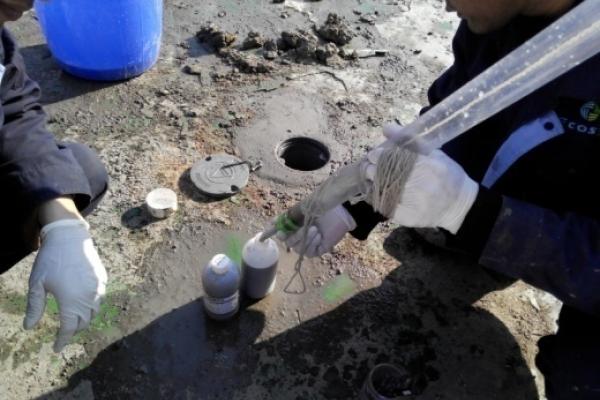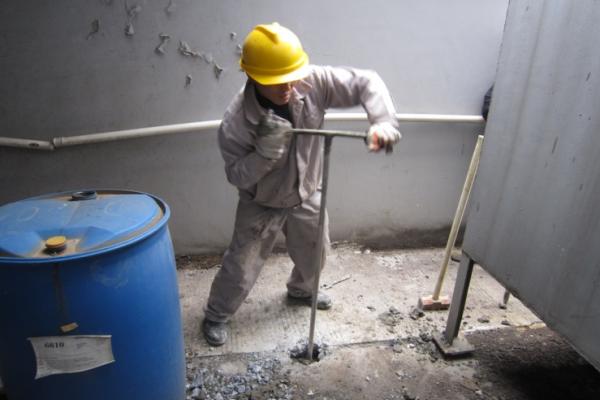

The manufacturing facility was mainly engaged in the design, research and development, manufacturing and after-sales service of automobile exhaust decorative pipes in Ningbo City, Zhejiang Province. In February 2013, a fire occurred at this facility. Due to concerns for potential contamination to soil and groundwater by electroplating wastewater leaked from the electroplating workshop and the wastewater treatment facility through the landscaping area in the facility and cracks on the workshop floor, the client hired two consulting companies to conduct preliminary investigation with sampling and analysis in September and December, 2013, respectively.
Greenment conducted detailed and supplementary investigations in January and March, 2014, respectively, based on the results of previous investigations, to obtain a comprehensive understanding of soil and groundwater contamination at the site.
A total of 13 deep boreholes and 27 shallow boreholes were installed during the detailed and supplementary investigations. The maximum depth of the deep boreholes was ten meters below the ground surface (bgs) and the maximum depth of the shallow boreholes was five meters bgs. In addition, ten groundwater monitoring wells were also installed across the site. A total of 165 soil samples and 15 groundwater samples were sent to laboratory for chemical analysis. The boreholes and groundwater monitoring wells were installed using hand augers and Powerprobe systems.
Based on the land use, presence of sensitive receptors, exposure scenarios, pathways and parameters and toxicological properties of contaminants, Greenment characterized the risk, and calculated the risk control values of contaminants of concern.
Ø Assessment protocol:“Technical Guidelines for Risk Assessment of Contaminated Sites” (HJ25.3-2014) and “Technical Guidelines for Risk Assessment of Contaminated Sites in Zhejiang (DB 33/T 892-2013)”;
Ø Assessment procedure:hazards identification, exposure assessment, toxicity assessment, risk characterization and calculation of risk control values;
Ø Target level of carcinogenic risk for a single contaminant:10-6;
Ø Target level of non-carcinogenic hazards for a single contaminant: 1.
The land use type of the site was industrial. The main exposure pathways included oral intake, dermal contact and inhalation of indoor and outdoor particulate matter from surface soil. There was no obvious exposure pathway from groundwater contamination. The main sensitive receptors were site workers. The Class IV limits of “Groundwater Quality Standard” (GB/T14848-93) were used as the target values for groundwater remediation. Based on the risk assessment results, the soil and groundwater in some parts of the site had been contaminated by heavy metals, resulting in unacceptable risks to human health.
Greenment determined the remediation target values and contamination extent based on the results of site investigation and risk assessment. The area of soil contamination in the electroplating workshop was approximately 1500m2, with the depth of 1.2~2.4m and a total volume of approximately 2100m3. The contaminant of concern in soil was nickel with the maximum concentration of 5,955 mg/kg and the remediation target value of 476 mg/kg. The area of contaminated groundwater was approximately 5000m2 with the depth of approximately 4.5m.The contaminants of concern in groundwater include nickel and Cr(VI) with their maximum concentrations of 3.75mg/L and 0.698mg/L, respectively. Their remediation target values were both 0.1mg/L.
Greenment evaluated multiple candidate remediation technologies and selected a remedy best suitable for the soil and groundwater contamination at the site. Excavation and ex-situ disposal as hazardous waste or reuse was selected for contaminated soil. Pump and treat was selected for groundwater remediation. Extracted groundwater was treated to acceptable standards before discharge.



